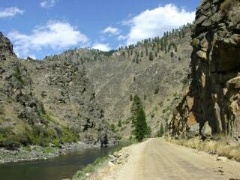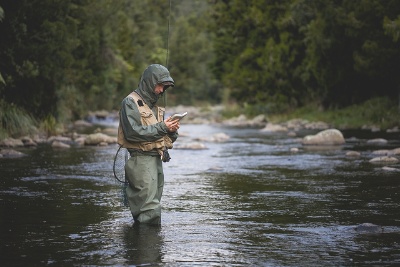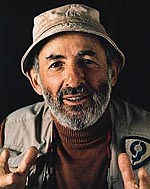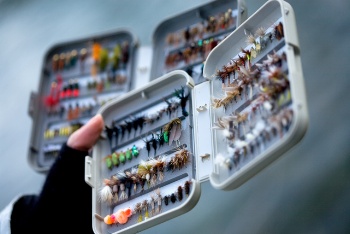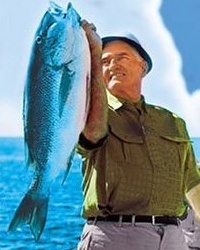Why do you fly fish?
If you asked this question of 100 fly fishermen, you’d get 100 different answers. Each of us has a unique motive, yet, I wager that none of the responders would reply, “ Because I like to catch fish”.
While “catching fish” is the obvious result we are all looking for, fly fishing aficionados seem to offer up elaborate reasons for their devotion. Authors of books and articles on the subject seem particularly prone to these abstract descriptions. I’ve read a lot of them. My favorite – because it is closest to my feelings – was written by Robert Traver.
Robert Traver was the pseudonym of John Donaldson Voelker, a lawyer, a prosecuting attorney and, in his later years, a justice in the Michigan Supreme Court. He authored several books, some with legal themes and some on fly fishing. His most important book on the law was the best-selling courtroom drama, “Anatomy of a Murder”, which became an Oscar-nominated movie directed by Otto Preminger and starring James Stewart.
Travers’ book, “Trout Madness”, is a collection of short stories. It is my favorite. In this book, Traver wrote:
favorite. In this book, Traver wrote:
“Successful fly fishing for trout is an act of high deceit; not only must the angler lure one of nature’s subtlest and wariest creatures, he must do so with something that is false and no good – an artificial fly. Thus fake and sham lie at the heart of the enterprise. The amount of Machiavellian subtlety, guile, and sly deception that ultimately becomes wrapped up in the person of an experienced trout fisherman is faintly horrifying to contemplate.”
In his book, “Anatomy of a Fly Fisherman”, Mr. Traver offers up his reason for being a fly fisherman, his “Testament of a Fisherman”:
“I fish because I love to; because I love the environs where trout are found, which are invariably beautiful, and hate the environs where crowds of people are found, which are invariably ugly; because of all the television commercials, cocktail parties, and assorted social posturing I thus escape; because, in a world where most men seem to spend their lives doing things they hate, my fishing is at once an endless source of delight and an act of small rebellion; because trout do not lie or cheat and cannot be bought or bribed or impressed by power, but respond only to quietude and humility and endless patience; because I suspect that men are going along this way for the last time, and I for one don’t want to waste the trip; because mercifully there are no telephones on trout waters; because only in the woods can I find solitude without loneliness; because bourbon out of an old tin cup always tastes better out there; because maybe one day I will catch a mermaid; and, finally, not because I regard fishing as being so terribly important but because I suspect that so many of the other concerns of men are equally unimportant – and not nearly so much fun.”
Yeah, that’s kinda like I feel….
